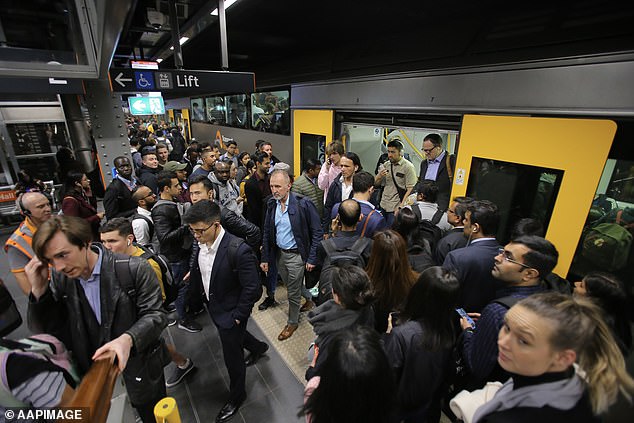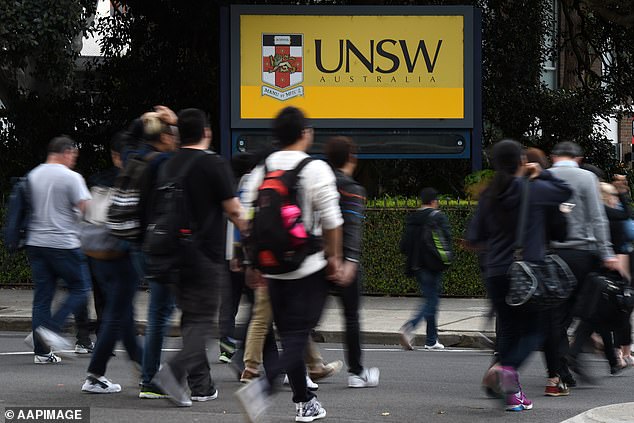Labor reveals key way it plans to reduce immigration – but more than 1.6 million migrants are still expected over five years
Anthony Albanese's Labor government is now promising to cut immigration by 185,000 people in four years by cracking down on international student visas.
But even with this reduction, the Treasury now expects 1.625 million new migrants to arrive in the five years to June 2027 – significantly more than the 1.5 million forecast in May.
That updated inflow is more than the combined population of Adelaide and Darwin.
Without government measures to crack down on visa controls, 1.8 million people would have come to Australia in five years.
Home Secretary Clare O'Neil released a new migration strategy on Monday to tackle dodgy behavior in the visa system.
“We are taking action to eliminate the exploitation of migrant workers from the system so we can protect wages and conditions for both migrants and locals,” she said.
The (left-wing) government of Prime Minister Anthony Albanese is now promising to reduce immigration by 185,000 in four years by cracking down on international student visas. Home Secretary Clare O'Neil (right) released a new migration strategy on Monday to tackle dodgy behavior in the migration system

But even with this reduction, the Treasury now expects 1.625 million new migrants to move to Australia in the five years to June 2027 – significantly more than the 1.5 million level forecast in May (pictured is the train station from Sydney Town Hall during peak hours).
The government has promised to monitor the growing number of international students trying to extend their stay in Australia by applying for a new student visa.
The Migration Strategy recorded a 30 percent increase in the number of international students on a second or subsequent visa last financial year, with 150,000 in this position, including many on vocational training.
“The number of international students transferring from course to course, particularly to courses below their current level of study, to extend their stay in Australia has increased,” the Home Office said.
Labor is focusing on immigration issues ahead of Thursday's release by the Australian Bureau of Statistics of overseas net migration data for the 2022-2023 financial year.
Treasury The Mid-Year Economic and Fiscal Outlook forecasts 510,000 arrivals in the year to June 2023 – a level significantly higher than the 400,000 inflow forecast in the May Budget.
That figure includes a permanent migrant cap of 195,000 – including skilled migrants, family reunifications and 20,000 humanitarian visas.
Then there is the long-term influx, including 270,000 international students and 45,000 visitors staying on a tourist visa for twelve months or longer.
Net overseas migration is expected to fall to 375,000 in 2023-2024, but this is higher than the level of 315,000 forecast just seven months ago.
But immigration levels are expected to slow from the middle of next year.
According to updated Treasury forecasts, immigration will fall to 250,000 in 2024-2025, a slight moderation from the forecast of 260,000 made in May.
Net overseas migration is expected to fall to 255,000 in 2025-26 and 235,000 in 2026-27 – down from the level of 260,000 for both financial years previously forecast.
“The migration strategy is expected to ensure that migration returns almost to pre-pandemic levels next financial year,” the Home Office said.
But figures for the coming financial years are still above the net overseas level of 239,600 in 2018-19 – the last full financial year before the pandemic in March 2020.
The government's forecast of 185,000 fewer migrants is based on a decline in net overseas migration of 65,000 in 2023-24, 60,000 in 2024-25 and 30,000 in both 2025-26 and 2026-27, based on the crackdown on Visa.

The government has pledged to provide additional scrutiny of the growing number of international students seeking to extend their stay in Australia by applying for a new student visa (pictured shows students from outside the University of New South Wales in Sydney)
Nevertheless, the Migration Strategy emphasized the need for immigration in the coming decade to cope with an aging population as more baby boomers retire.
“The coming decades offer opportunities for Australia,” the report said.
'There are also major challenges: as the population ages, the participation rate is expected to gradually decline.
“This will test our ability to provide goods, services and support to all who need them.”
But the Home Office admitted that capitals were struggling to accommodate rising population growth.
“We need to better manage migration inflows,” the report said.
'As the Migration Review notes, Australian capital cities have generally experienced much faster population growth than non-capital cities in recent years.
“They have sometimes struggled to plan for the infrastructure and services that the rapidly growing population needs.”
The Commonwealth has now pledged to work better with the states and territories, which are left to pick up the tab for transport, health and education infrastructure.
“This also requires investment in housing and infrastructure such as schools, hospitals and transport to match migration levels,” the Home Office said.
'Failure to do so could erode public confidence in the migration system, undermining the economic and social benefits of migration.'
